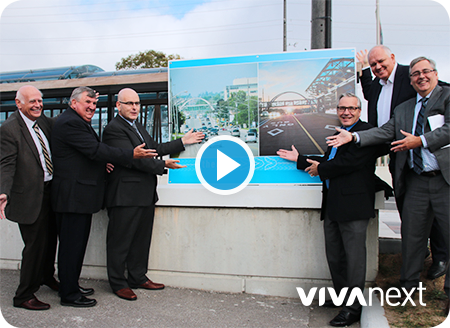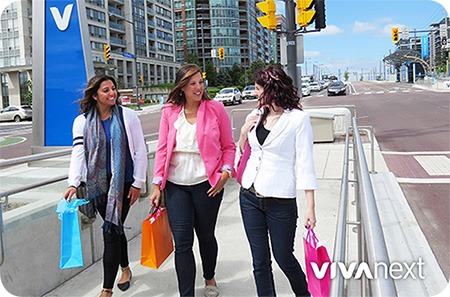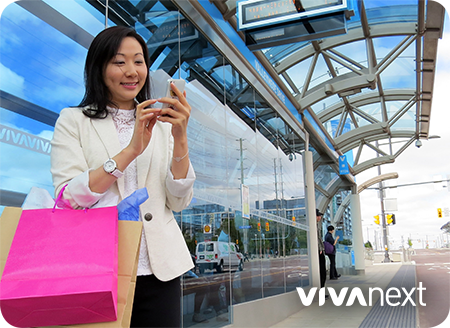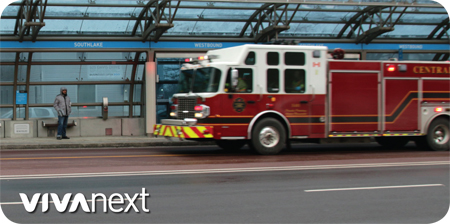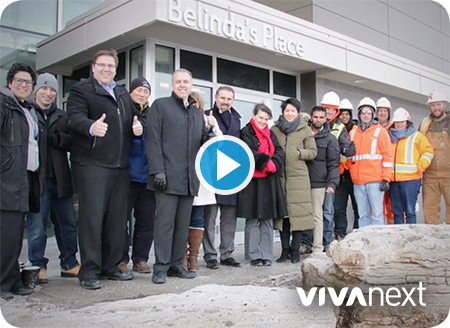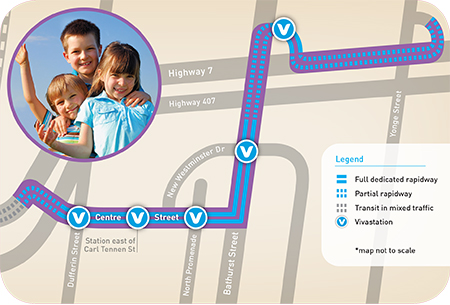Last week, the Honourable Steven Del Duca, Minister of Transportation; Wayne Emmerson, Chairman and CEO, The Regional Municipality of York; Bruce McCuaig, President and CEO, Metrolinx; the Chairman of the YRRTC Board, Frank Scarpitti, Mayor of the City of Markham and Tony Van Bynen, Mayor of the Town of Newmarket, joined together to celebrate the transformation of Newmarket, with the completion of the bus rapid transit (BRT) rapidway project on Davis Drive.
The Davis Drive rapidway was opened for the new Viva service in November 2015, extending 2.7 kilometres from Yonge Street to Roxborough Road, with service continuing in mixed traffic another 2.3 kilometres with curbside stops and a turn-around at the new park and ride facility at Highway 404. This past spring, crews began work on the finishing touches such as planting trees and installing the last sections of sidewalk.
Rapid transit along Davis Drive promotes growth and development, and supports the priorities of the Town of Newmarket’s Strategic Plan, York Region’s Centres and Corridors plan, Metrolinx’s Regional Transportation Plan for the Greater Toronto and Hamilton Area (GTHA) and Ontario’s Growth Plan for the Greater Golden Horseshoe.
Along with providing a convenient new travel option, the Davis Drive rapidway project helped transform Newmarket with updated utilities, new infrastructure such as a water main and the Keith Bridge, and wider boulevards. These improvements will help support the continued growth and development in Newmarket’s town centre.
The Davis Drive rapidway has been years in the making. We’ve captured the entire transformation on video. Through all the planning, design and construction there’s something special about knowing that you’ve contributed to the future growth and prosperity of entire neighbourhoods, towns and regions by connecting people to the places they work, shop and play.
We would like to sincerely thank the community, businesses and residents that have supported the project from the outset, and endured the disruptions that come with long term construction. Your patience, understanding and feedback have been invaluable. Newmarket now has a rapid transit system we can all be proud of and enjoy for many years to come.

